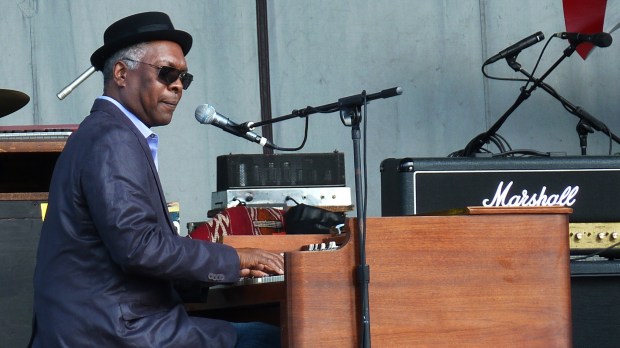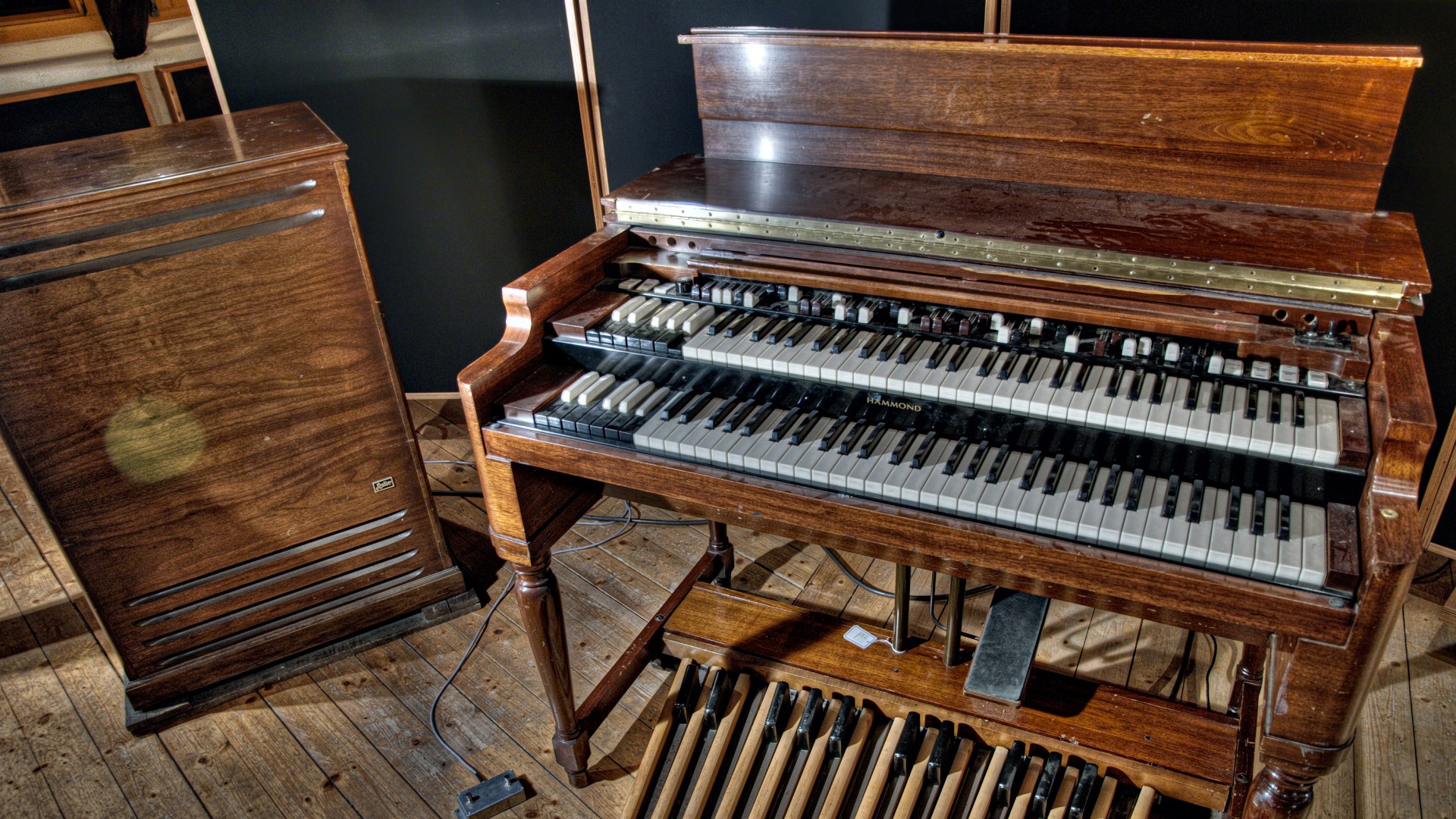Sixty years ago, gospel music was transformed, and it likely happened because of a happy accident. Or perhaps it was part of a Master Plan. The “why” doesn’t really matter, I suppose.
But to understand what happened 60 years ago, you have to look back 80 years. Created, in part, to meet the need of churches for a cheaper alternative to the pipe organ, the Hammond Organ Company debuted the Hammond B-3 in 1935. It was, and is, a musical marvel. From the beginning, the B-3 was an incredibly expressive machine with enormous reach and power. It is one of the few instruments—alongside a cello or slide guitar in the hands of a master—that can match the emotional range of the human voice.
Among the first to adopt and embrace the B-3 was the influential First Church of Deliverance in Chicago, when music director Kenneth Morris convinced the legendary founder, the Rev. Clarence H. Cobbs, to buy one in 1939. According to Robert M. Marovich’s A City Called Heaven: Chicago and the Birth of Gospel Music, Morris later recalled, “It was the most unusual thing you ever heard. People came from all over just to hear me played that organ. Oh yes, it swept! It swept! Instantaneously!”
Among those enamored with the B-3 was Maceo Woods, a keyboard player good enough to back top gospel artists or do R&B sessions for Vee-Jay Records—Vivian Carter’s and Jimmy Bracken’s pioneering African American-owned record label. Today, Woods is the pastor of the Christian Tabernacle Church on Chicago’s sprawling South Side. Several years ago, my wife, Mary, and I interviewed the good reverend at his church. He talked about his career, his ministry, and one early morning in 1955 at the Universal Studio on Ontario Street.
As staff organist, Woods recorded with gospel groups and soloists for Vee-Jay, usually during what he called the studio’s “garbage time, which was 12 to 6 in the morning.” Sometimes the sessions were with well-known artists, such as Cleophus Robinson or the Argo Singers. Other times, the sessions were for artists neither Woods nor anybody else had ever heard of (or now remembers).
On this particular morning—at about 3:15—he was in the studio with Vivian and an engineer. Everyone was exhausted, drinking coffee to continue the nonstop recording sessions. Woods was sitting stoically at the studio’s B-3 when Vivian’s voice crackled over the intercom:
“Maceo, would you just play something? I need a new theme song for my show.” In addition to Vee-Jay, Carter owned a record store and hosted her own popular radio show.
“Okay, Vivian,” Woods said, “but maybe later on, because everybody’s kind of weary.”
Woods further recalled:
So I started fooling around. And my favorite hymn, of course, is “Amazing Grace.” So I played it and didn’t really play it as well as I thought I could have, because I just felt like she just wanted to hear something. But the engineer was recording it. I had no idea until after it was over. Then they played it back to me. She said, “Well, I want to use this as my theme song.” I said, “Okay, Viv, but let’s do it again at another time.” She said, “Please.”
Woods relented and continued the sessions, not giving the instrumental meditation another thought.
Carter played Woods’ improvisations based on “Amazing Grace” the following evening on her radio show in Gary, Indiana. It became a sensation and remains the best-selling gospel instrumental of all time.
About the same time, jazz artists Jimmy Smith and Jimmy McGriff also “discovered” the B-3 and began long, satisfying careers featuring the instrument. From there, it entered rock ‘n’ roll, most notably as the instrument of choice for Booker T. Jones, Steve Winwood, Ian McLagan, Gregg Allman, Rod Argent, Felix Cavaliere, and others—all of whom mastered and championed the B-3, usually aided and abetted by a pair of Leslie speakers.
 Paul Riismandel / Flickr
Paul Riismandel / Flickr
The B-3 tradition remains firmly grounded in gospel music. Billy Preston was a master of the funky gospel keyboard, and churches large and small have B-3s (and the various other electric keyboards) and musicians ready, willing and able to use them to the glory of God.
But Woods’ virtuoso turn with the B-3 on “Amazing Grace” was a signal event that began a transformation in gospel music. A piano and occasionally a pipe organ had long been the only instruments deemed suitable to accompany gospel singing in “mainstream” African American churches: Baptist, Methodist, and African Methodist Episcopal. In the 1950s, other musical instruments were allowed and cherished only in the sanctified tradition: Pentecostal, Church of God in Christ, Assemblies of God, as well as 10,000 storefront churches. The B-3 changed that perception.
The B-3 is an important link, connecting old and new, past and present, in gospel. Gospel quartets—who were at their ascendency in 1955—were just beginning to break with tradition and introduce guitars into their concerts, led by the incomparable Howard Carroll with the Dixie Hummingbirds. Later, the groups would add drums and bass guitars. Beginning with the Mighty Clouds of Joy, through Andrae Crouch and the Disciples and the Winans, virtually every gospel group and church-based mass gospel choir, now has a full band. And, of course, the keyboard is often the Hammond B-3.
So why is this important? Certainly, the heart of gospel music is its message—the Good News. Gospel music is gospel music only if it has an evangelical message. Yet it also seeks to fulfill Scripture’s mandate to “make a joyful noise” (Ps. 98:4). A host of instruments are mentioned in the Bible—harps, lutes, trumpets, pipes, cymbals, bells, flutes, rattles, tambourines, zither, and probably even the odd sackbut or two—and all of them make happy sounds.
The introduction of additional instruments enabled gospel music to embrace new generations of listeners—and musicians. It has been part of the continually evolving foundation of gospel, a genre that simply refuses to be frozen in time and identified with a single sound from a single era.
Just as importantly, the rise of the B-3 was a key component in the mindset of many gospel artists and fans—that the musicianship can and should match the quality and passion of the vocals. God deserves our best in performance. Not at the expense of the message, but music praising an Almighty God should be every bit as compelling as the vocals of a Mahalia Jackson, Marion Williams, or Yolanda Adams.
The Rev. Woods can still be compelled to play a Hammond B-3 from time to time—much to the delight of his congregation, who often stand and shout at his music’s more dramatic moments. And Elbertina “Twinkie” Clark can bring down a house with just a few gospel-flavored chords.
As for the instrument that sparked this change—from 1935 to 1955 to 2015—the mighty B-3 continues to bring the thunder and channel impassioned musicianship in churches large and small.
Where do you think the term “pull out all the stops” came from?
Robert Darden is professor of journalism, public relations, and new media at Baylor University and author most recently of Nothing But Love in God’s Water: Black Sacred Music from the Civil War to the Civil Rights Movement, Volume I (Penn State University Press).
Here is a gospel introduction to the Hammond B-3, suggested by Robert F. Darden and Robert M. Marovich:










